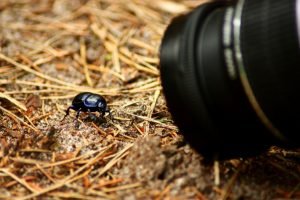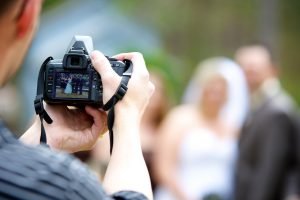Photography for Beginners
Photography is one of those things that can bring you so much joy just by having it as part of your life. Deceptively simple on the surface, photography can bring you a lifetime of discovery and learning.
One of the joys of photography is that there are so many different areas that you can jump into and explore. The basics that you learn in a beginning photography course will help you throughout your journey into this artistic realm.
Landscape Photography Tips
Landscape photography is ideal for you if you enjoy the outdoors, traveling and have a pretty fair amount of patience. Most people don’t realize the time that great landscape photographers put into their craft. Being at the right place at the right time, often waiting for hours for the perfect light or moment, envisioning just how the image will look when it’s completed.
The tools needed to begin your quest as a landscape photographer are pretty basic. You need a good quality wide angle lens, preferably a tripod, often with a panoramic head for shooting panoramic landscapes, various filters including a polarizer, variable neutral density, split filters, etc.
Take note that if you enjoy landscape photography during the winter, you’ll want to stick with a carbon fiber tripod as the cheaper aluminum ones will more often than not, freeze when you need them the most. Carbon fiber offers the added advantage of being lighter which you will greatly appreciate after hiking a few miles through the woods or snow. You should try camera for hiking to make a good photo.
Macro Photography Tips
The smallest elements in nature often are the most beautiful and fascinating. Macro photography allows you to view nature in a way most people never imagine. Once you start photographing nature at this scale, you begin to see and appreciate the awe inspiring beauty nature has to offer.
One of the nice things about macro photography is that you aren’t quite as much at the mercy of mother nature. You have a lot more flexibility in the range of items and lighting conditions that you can shoot in. With everything so small, you can easily light the subject with your portable flash equipment to achieve the desired effect.
In addition to the previous complement of equipment, you might want to consider a tripod that has an arm that works both horizontal and vertical. This will give you a lot more flexibility in shooting difficult to reach subjects. Also, a series of close up lenses will often make the difference between a so so photo and a great piece of art. They will change and improve the perspective and decrease the camera to subject distance quite dramatically.[amazon_link asins=’B00ZC0MHZE,B072MMVBML,B06X3X6DPL,B071NDJXS7,B071742JMB’ template=’ProductCarouselwithoutheader’ store=’thewisy-20′ marketplace=’US’ link_id=’0a339f8e-779f-11e7-ae61-35e26561f2e1′]
Nature Photography Tips
Nature Photography is more about photographing the elements rather than the landscape. whether you photograph birds, wildlife or thunderstorms you will most likely be out in the elements a great deal.
Nature photographers, like their landscape counterparts, are out at all hours of the day and night to get the perfect image. It may be the middle of the night to shoot a great storm passing by, or early in the morning when wildlife is out feeding. Patience is a virtue as often you’ll have to wait on mother nature to align with the universe and give you that amazing photo you are looking for.
Tools of the trade are similar to landscape photographers. A good tripod, an assortment of lenses from wide angle to telephoto to macro, various filters, a few small flash units (great for shooting the small stuff), and a raincoat. Many backpacks, like Lowepro which is the brand I use, have built in rain gear to protect everything.
I would highly recommend Lowepro for your next camera bag. I’ve used them for many, many years, and they last unlike anything I’ve ever owned. Sturdy, they wear well, zippers keep working, can withstand a lot of abuse and they are very comfortable to carry out in the elements.
Nature Photographers Tools
[amazon_link asins=’B004I2HBR6,B005MZNINE,B013MC8H2A’ template=’ProductCarouselwithoutheader’ store=’thewisy-20′ marketplace=’US’ link_id=’7f9e0ffb-779f-11e7-bae5-8b81ad4def31′]
Product Photography Tips
Many small businesses like to do their product photography. If done properly, it’s cost effective, saves a lot of time, offers flexibility and helps to keep production in house.If you are interested in doing your product photography, it would be well worth your while to enlist the help of a professional photographer to give you an afternoon tutorial in just what you need to do and the types of equipment required to do the job properly.
Once you have a workflow set up to shoot your products, it can easily be replicated for future projects. Make sure though that you have the proper lighting, lenses, etc. to ensure a final quality image. It does no good to save a few bucks by doing it yourself, only to create a poor quality image. Remember that image is what sells your product. Don’t fool yourself into thinking that it’s ‘just good enough”. It’s not.
A low-quality image denotes a low-quality product and a company that does not care about its image. Would you want to buy from a company like that in a world where a competitor is just a mouse click away?
Remember the last ad you say for a great restaurant? The food in the photograph makes your mouth water. Your product photography should do nothing less.
The image pictured here, by the way, is a one-ton fossil extracted from the crystal mines in Mexico. It is approximately six feet high and could only be moved via pallet. In the world of product photography, you need to be prepared to shoot anything!
Product Photography Tools
[amazon_link asins=’B005CX9S8A,B01GIL6EU4,B01N75CIVP,B01JHR5I8A’ template=’ProductCarouselwithoutheader’ store=’thewisy-20′ marketplace=’US’ link_id=’182749b5-77a0-11e7-909e-f9e84eb7d8d0′]
Advertising Photography Tips
You may be interested in learning to create photographs to advertise your business or to possibly become a commercial advertising photographer. While it can be a somewhat lucrative field to be in for the select few, the bar is set very high, and competition is fierce.
To create your photography for advertising requires some skills. You need to have a good sense of composition, symmetry, and balance as well as know how to shoot a subject to be cropped and integrated properly for an ad. Start with simple concepts and build upon them as you gain proficiency.
The gear compliment is rather straightforward. A good, solid tripod, lenses from wide angle to telephoto to possibly (and probably) macro, studio lighting, light boxes, umbrellas, backdrops, posing tables for products, etc.
Study various periodicals to see the style and concept that the photographer and graphic artist were striving for in the ads that they create. You’ll be amazed at how much you can pick up just by analyzing someone else’s work.
Advertising Photography Tools
[amazon_link asins=’B014JILY12,B013JV3J1I,B00I03I894′ template=’ProductCarouselwithoutheader’ store=’thewisy-20′ marketplace=’US’ link_id=’3da07cc1-77a0-11e7-824b-45aa66e2fce1′]
Family Portrait Photography Tips
Family Portrait Photography is ideal if you love photographing people, groups, and kids. It’s something you should take rather seriously if you choose this route professionally, as you are creating lasting memories that will be cherished for a lifetime.
To prepare yourself for your entry into the world of family photography, you need to develop your talents with posting individuals, groups of people and kids as well. You need to be a people person to make family photography a career or even to do a great job of it with your own family and friends.
The equipment required is fairly simple. A good tripod, portable and studio lighting, soft boxes and umbrellas. Lenses are pretty basic. Telephoto for individuals and medium to wide angle for groups.
Family Photography Tools[amazon_link asins=’B00SXZJWQW,B00OIK33LG,B01MXXP4EC,B01C3Q3IES’ template=’ProductCarouselwithoutheader’ store=’thewisy-20′ marketplace=’US’ link_id=’729ec5e3-77a0-11e7-9cf0-53909bc0e273′]
Wedding Photography Tips
Weddings have probably one of the more difficult entry points for a photographer. Unless you are looking for a recipe for disaster, don’t even think of shooting a wedding without learning the ropes and tricks of the trade from a professional wedding photographer. You need to shoot a fair number of weddings as an apprentice before you even consider offering your services as a wedding photographer.
I can’t tell you how many people have come to me over the years sorely disappointed because they found someone cheap to do their wedding. Ruined images, no images at all, or fighting with the photographer to even get the images are but a few of the scenarios that happen all too often.
There are a great many necessary skills to become a competent wedding photographer. Remember that you’re photographing a once in a lifetime event. There is no room for anything less than an expert behind the camera.
Wedding Photographer Tools[amazon_link asins=’B01MS7YMZW,B01EVYFAL4,B01HTLTLNY,B00JTURSGG’ template=’ProductCarouselwithoutheader’ store=’thewisy-20′ marketplace=’US’ link_id=’6960058b-77a1-11e7-93a5-d7570e0f40e1′]
Modeling Photography Tips
It’s a tough job, but I suffer through it day after day after day. 🙂 Photographing models can be a lot of fun (and exercise) for a photographer. You’ll often be out in the elements early morning or late at night, working with crews of people, models, make up artists, hair stylists, etc.
It can be a rewarding career, or at the very least a lot of fun just to shoot your friends. Take the time to learn the basics of lighting and composition and you’ll be off to a great start in learning to shoot models.
Equipment requirements are fairly straightforward. Medium to telephoto lenses, portable lighting, soft boxes and portable changing tents for the models.
Types of Photography
There are so many facets of photography to explore. Start with something simple and then expand your depth and breadth of knowledge as you gain experience. You’ll find that you will naturally fall into a particular category of what you like to shoot.
Developing your eye as a photographer is part of the process in building your skill as an artist. It may come naturally to you, or you may have to work at it a bit in order to be comfortable with the concepts of balance, symmetry, and composition.
The best part about photography is that when you look at your images that you have taken over the years, it instantly transports you back to the time, place, and feeling that created that image in the first place. So enjoy the journey, it’s the best part of the road to the destination.
Did you like this page?
Thanks for voting. It’s greatly appreciated!
You will also like these posts…..
